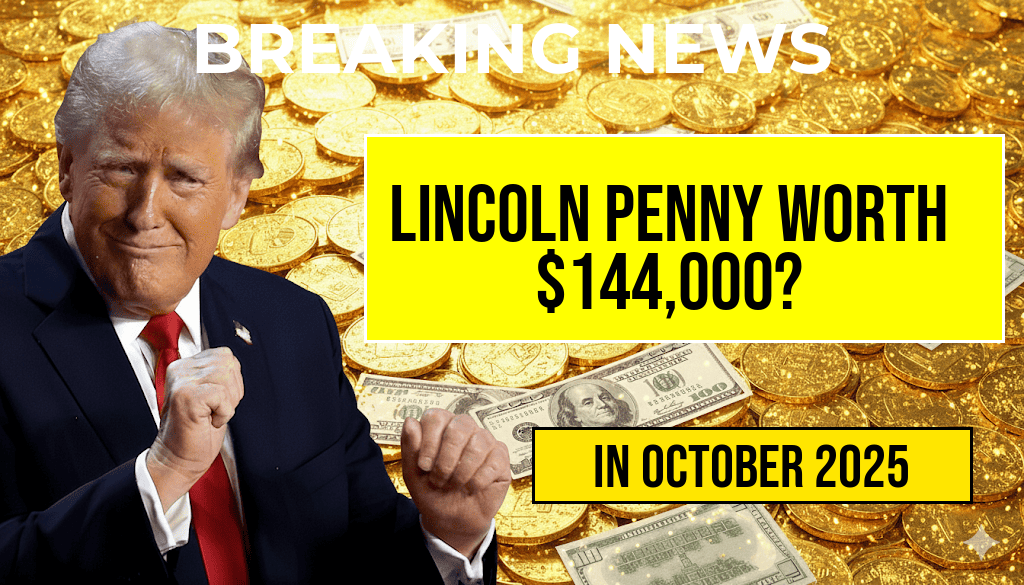The Lincoln Wheat Penny, a staple of American coinage for decades, continues to pique curiosity among collectors and casual observers alike. While most circulated examples are worth face value, rare specimens can command extraordinary prices—some reaching as high as $144,000. This raises a compelling question: Is the Lincoln Wheat Penny still in circulation despite its remarkable potential value? The answer involves understanding the coin’s historical context, rarity, and the modern circulation landscape. Despite its iconic status, the majority of Wheat Pennies no longer see everyday use, having been replaced by newer coinage. However, a small number of valuable specimens occasionally turn up, fueling speculation about their presence in pockets today.
Historical Significance and Rarity of the Lincoln Wheat Penny
The Origins and Production
The Lincoln Wheat Penny was introduced in 1909 to commemorate Abraham Lincoln’s 100th birthday, marking a significant milestone in American numismatic history. Minted primarily from 1909 to 1958, these coins featured the portrait of Lincoln on the obverse and two wheat stalks on the reverse, symbolizing prosperity and growth. Over the decades, millions of Wheat Pennies circulated nationwide, making them a familiar sight in American change jars and cash registers.
Factors Contributing to Its Value
Most Wheat Pennies are common, but certain factors elevate their worth among collectors:
- Minting errors: Coins with die cracks, misalignments, or double strikes.
- Limited mintages: Coins from specific years or mints with lower production numbers.
- Condition: Coins graded as MS (mint state) or higher command premium prices.
- Unique specimens: Rare varieties, such as the 1909-S VDB or the 1955 double die.
The Rarity of Extremely Valuable Wheat Pennies
Examples of Notable Rare Coins
Among the most valuable Wheat Pennies is the 1909-S VDB, produced in limited quantities at the San Francisco Mint. This coin alone can fetch upwards of $100,000 in top condition. Another example is the 1955 double die, which features noticeable doubling of the date and lettering, making it highly sought after. Such coins are rarely encountered in circulation, often residing in private collections or museums.
The $144,000 Valuation
The figure of $144,000 is associated with the highest recorded auction prices for a Wheat Penny, typically involving pristine specimens with exceptional errors or varieties. It’s crucial to clarify that such coins are exceedingly rare and usually held by collectors or investors, not circulating among the general public.
Are Wheat Pennies Still in Circulation?
Modern Circulation Trends
Since the late 1950s, the United States transitioned away from Wheat Pennies, replacing them with the Lincoln Memorial reverse design and later the Lincoln Memorial cent in 1959. The original Wheat Penny ceased production, and most coins gradually left circulation as newer coins replaced them. Today, Wheat Pennies are primarily found in coin collections, numismatic markets, or as occasional finds in old jars or inherited collections.
Do They Still Turn Up in Daily Transactions?
While it’s unlikely that Wheat Pennies are actively circulating in everyday transactions, they occasionally surface in change, especially from older sources or in regions where cash handling is less frequent. Even then, the chances of finding a rare, high-value specimen are extremely slim. Most circulated Wheat Pennies are worth their face value unless they possess specific errors or rare varieties.
How to Identify and Preserve Valuable Wheat Pennies
Key Identification Tips
| Feature | Details |
|---|---|
| Year & Mint Mark | Look for rare years like 1909-S or 1955 double die |
| Condition | Higher grades (MS 65+) significantly increase value |
| Error Types | Double dies, die cracks, off-center strikes |
| Surface & Luster | Well-preserved coins with minimal wear and original luster |
Preservation Advice
Collectors should handle Wheat Pennies with care, storing them in protective holders or albums to prevent scratches and corrosion. Authentic grading and certification from reputable services can help establish provenance and value.
Conclusion
The vast majority of Lincoln Wheat Pennies are no longer in circulation, having been replaced by newer coin designs over the past six decades. While the typical Wheat Penny remains a common coin, rare specimens with errors or specific varieties can command prices reaching hundreds of thousands of dollars at auction. The $144,000 valuation is reserved for exceptional, professionally graded coins and not indicative of everyday currency. For most collectors and everyday users, Wheat Pennies serve as nostalgic reminders of American coinage history rather than circulating currency with high monetary value.
For more detailed information on rare coins and their valuation, consult resources like the Wikipedia page on Lincoln Wheat Cents or reputable numismatic sources such as Professional Coin Grading Service (PCGS).
Frequently Asked Questions
Is the Lincoln Wheat Penny still in circulation today?
No, the Lincoln Wheat Penny is no longer in active circulation. It was primarily minted between 1909 and 1958 and has since been replaced by newer coin designs.
Why does the Lincoln Wheat Penny have such a high value?
The Lincoln Wheat Penny can be worth up to $144,000 due to its rarity, especially certain minting errors or low-mintage years. Collectors highly prize these coins, driving up their value.
What are the most valuable Lincoln Wheat Pennies?
The most valuable Lincoln Wheat Pennies are typically those from 1909-S VDB, 1914-D, and coins with rare errors or misprints. Coins with unique features or limited production runs tend to be the most sought-after.
Can I still find Lincoln Wheat Pennies in circulation or for sale?
While Lincoln Wheat Pennies are rarely found in circulation today, they can still be purchased through coin dealers, auctions, or collectors’ markets. Some enthusiasts also find them in old collections or coin rolls.
What should I do if I think I own a valuable Lincoln Wheat Penny?
If you believe your Lincoln Wheat Penny might be valuable, consult a professional coin appraiser or numismatist for proper evaluation. Authenticating and grading your coin can help determine its market value.





